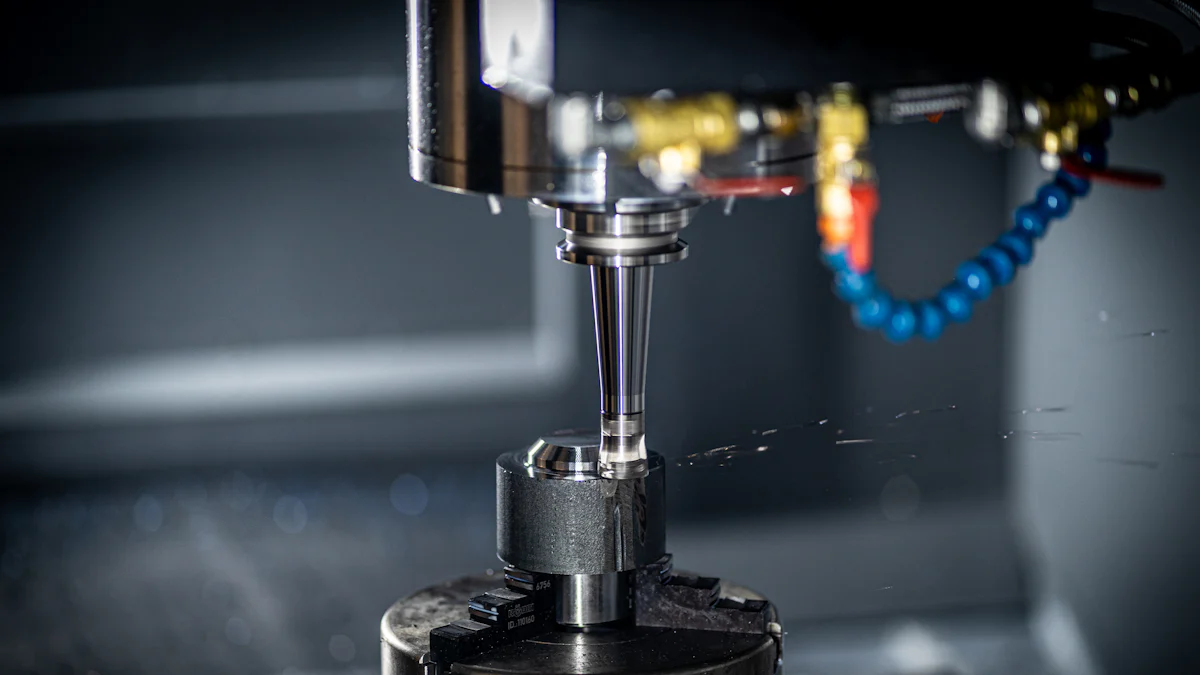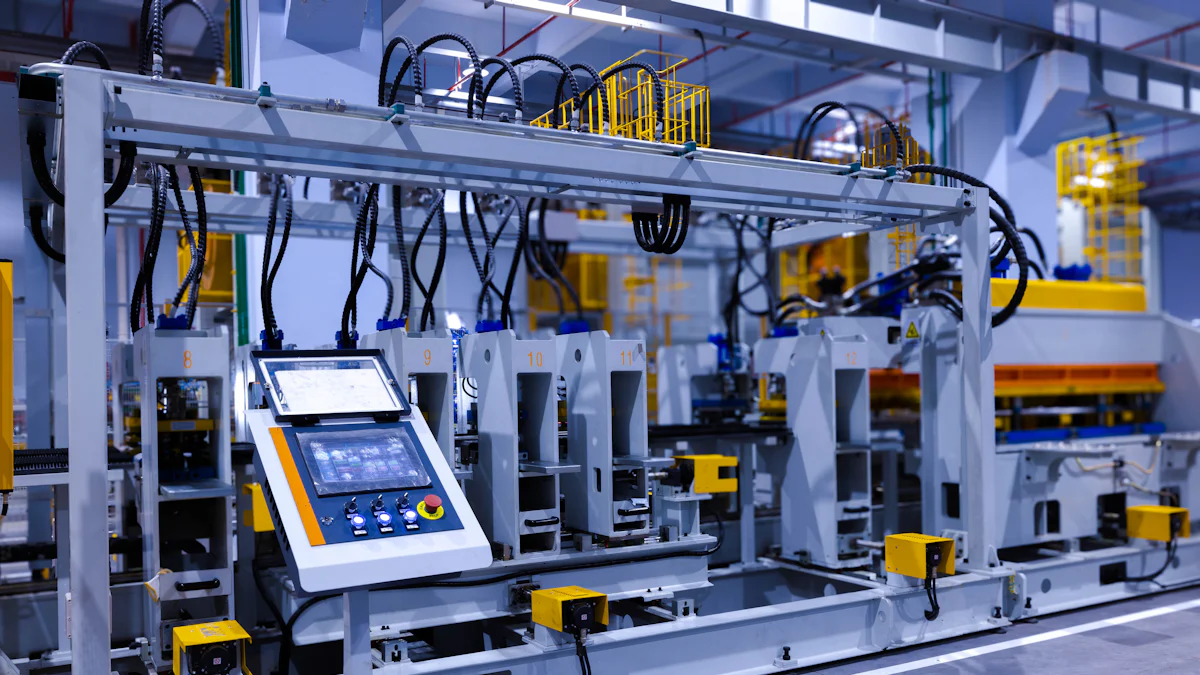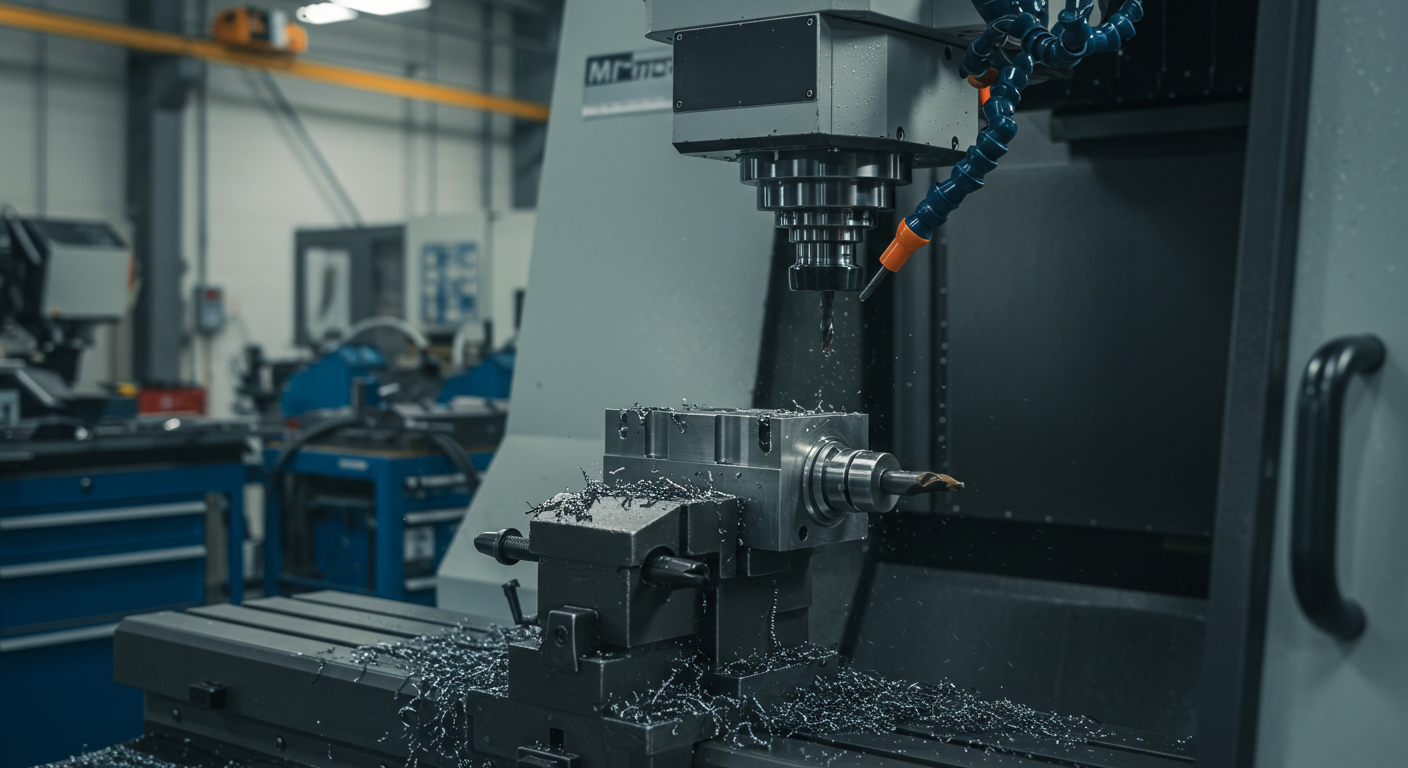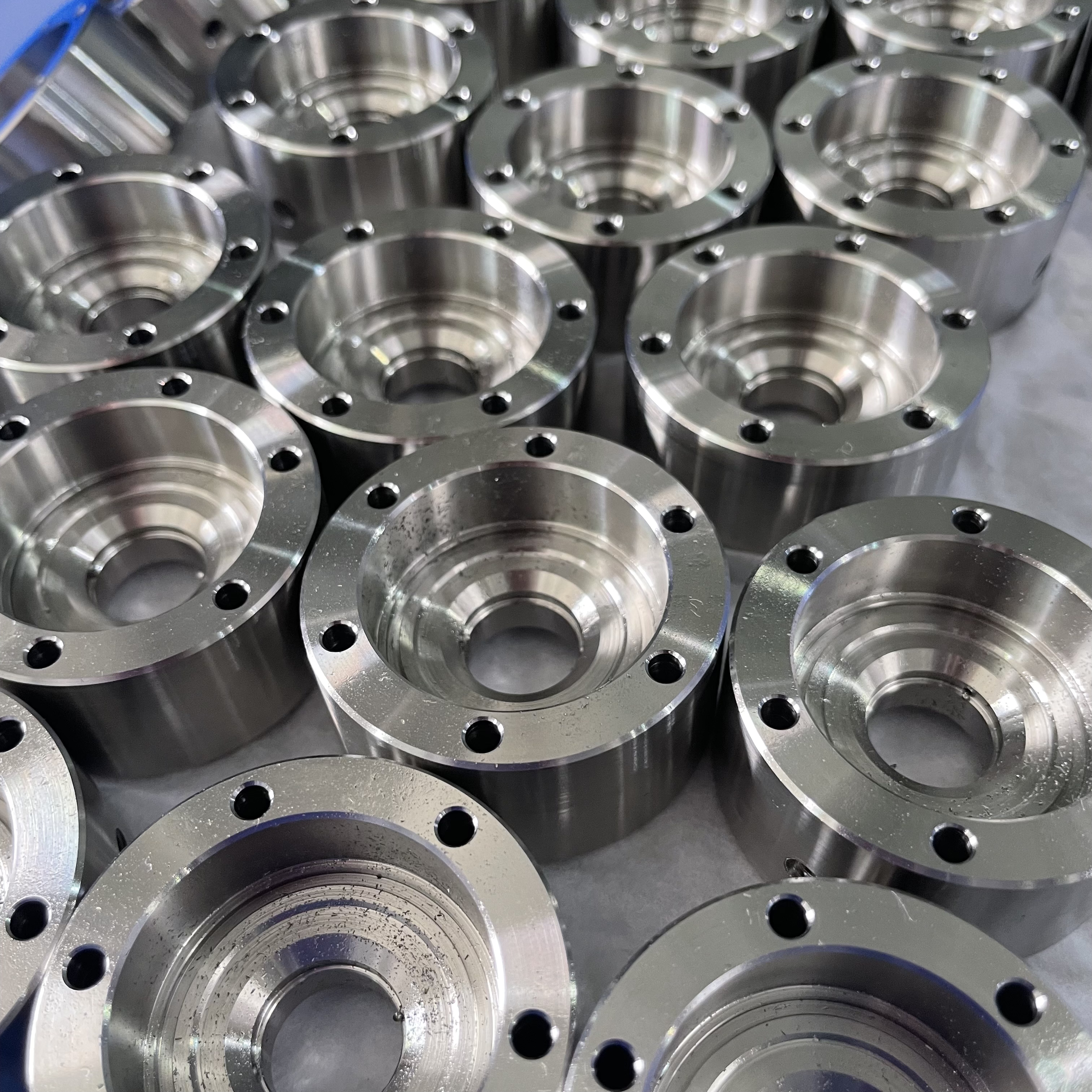The Benefits of Integrating CAD/CAM Software with CNC Machines

Integrating CAD/CAM software with CNC machines transforms manufacturing processes. You can achieve unmatched precision and efficiency by automating workflows and reducing material waste. Advanced software adapts to complex designs, ensuring repeatable, high-quality results. With the CAM market projected to reach $25.2 billion by 2032, industries like aerospace and healthcare are rapidly adopting this technology.
Key Takeaways
Using CAD/CAM software with CNC machines makes work faster and easier.
It helps make products more accurate and reduces mistakes and waste.
Picking good CAD/CAM software means checking if it works well with CNC machines and is easy to learn and use.
Understanding CAD/CAM Software and CNC Machines
What is CAD/CAM Software?
CAD/CAM software plays a pivotal role in modern manufacturing. It combines Computer-Aided Design (CAD) and Computer-Aided Manufacturing (CAM) to streamline the transition from design to production. This software provides tools for parametric modeling and advanced 3D design, enabling you to create intricate and precise designs. It also includes nesting features that optimize material usage, reducing waste and improving cost efficiency.
In manufacturing, CAD/CAM software simplifies the creation of NC machining codes through efficient CAM programming tools. By converting CAD designs into machine-readable commands, it ensures seamless communication between design and production phases. Investing in high-quality software enhances precision, boosts efficiency, and improves product quality, making your manufacturing processes more competitive.
The Role of CNC Machines in Modern Manufacturing
CNC machines have revolutionized manufacturing by delivering unmatched precision and consistency. These machines automate production, enabling you to create complex geometries and intricate designs with ease. They operate continuously, reducing production time and increasing overall efficiency.
CNC machining ensures repeatability, producing identical parts under controlled conditions. This level of accuracy is essential for industries like aerospace and medical devices, where quality cannot be compromised. By streamlining workflows and optimizing productivity, CNC machines set new standards for modern manufacturing.
How CAD/CAM and CNC Work Together
Integrating CAD/CAM software with CNC machines bridges the gap between design and production. Once a design is complete, the CAM software generates tool paths and G-codes, which control the CNC machine's movements. This process involves setting parameters like material type and feed rate to ensure optimal performance.
The integration eliminates errors, reduces production time, and enhances accuracy. By automating workflows, you can focus on innovation while maintaining high-quality standards. This collaboration between CAD/CAM software and CNC machines transforms manufacturing into a more efficient and scalable process.
Key Benefits of Integrating CAD/CAM Software with CNC Machines

Improved Efficiency and Workflow Automation
Integrating CAD/CAM software with CNC machines significantly enhances workflow efficiency. CAM automation eliminates manual steps when transitioning from CAD designs to CNC machining. This saves time and ensures consistent quality. For example, American Micro Industries reported an 80% reduction in machining time after adopting integrated CAD/CAM solutions.
You can also benefit from optimized toolpaths, which increase productivity and reduce machining time. The integration supports real-time design iterations without requiring extensive data manipulation. This seamless connection between design and manufacturing functions breaks down barriers, enabling you to achieve higher manufacturing efficiency.
Enhanced Precision and Consistency in Production
CAD/CAM software integration ensures precise and consistent production outputs. Automated processes reduce errors during the transition from design to manufacturing. Real-time communication between design and production teams minimizes discrepancies and enhances product quality.
This integration allows you to maintain consistent standards across all production runs. By automating repetitive tasks, you can focus on innovation while ensuring that every product meets exact specifications. The result is improved quality control and reduced waste.
Cost-Effectiveness Through Reduced Errors and Material Wastage
The precision of CAD tools minimizes errors and rework, cutting down on costly revisions. Advanced features in CAD/CAM software optimize material usage, ensuring minimal waste. For instance, accurate simulations anticipate potential problems, reducing scrap rates and material costs.
Integrated systems also improve manufacturing accuracy, further reducing material waste. By streamlining processes and enhancing precision, you can achieve significant cost savings while maintaining high-quality standards.
Increased Production Speed and Scalability
CAD/CAM software integration accelerates production by streamlining workflows. Automated processes eliminate errors and reduce production time. Manufacturers like American Micro Industries have experienced dramatic efficiency gains, such as an 80% reduction in machining time.
This integration also supports scalability. You can handle larger production volumes without compromising quality or efficiency. By optimizing toolpaths and automating repetitive tasks, you can meet growing demands with ease.
Simplified Prototyping and Design Iterations
The integration of CAD/CAM software simplifies prototyping and design iterations. You can create accurate prototypes quickly, reducing lead times. Real-time communication between design and manufacturing teams enables rapid adjustments, ensuring that prototypes meet exact tolerances.
This streamlined process supports innovation. You can test and refine designs efficiently, sharing prototypes with customers faster. By reducing the time to production, you can bring products to market more quickly while maintaining high standards of quality.
Practical Examples of Successful CAD/CAM and CNC Integration

Case Study: Boeing's Use of CAD/CAM for Aerospace Manufacturing
Boeing has set a benchmark in aerospace manufacturing by integrating CAD/CAM software with CNC machines. This integration allows Boeing to produce highly complex components with unmatched precision. For example, the company uses CAD/CAM systems to design and manufacture lightweight yet durable parts for aircraft. These systems generate precise toolpaths for CNC machines, ensuring consistent quality across production runs.
The aerospace industry demands strict adherence to safety and performance standards. Boeing meets these requirements by leveraging CAD/CAM software to simulate and optimize designs before production. This process minimizes errors and reduces material waste. By automating workflows, Boeing achieves faster production cycles, enabling the company to meet tight deadlines without compromising quality. The integration of CAD/CAM and CNC machines has become a cornerstone of Boeing's manufacturing strategy, driving innovation and efficiency.
Real-World Applications in Automotive and Medical Device Industries
In the automotive industry, CAD/CAM integration with CNC machines has revolutionized production. This combination improves efficiency and accelerates the development of new vehicle models. For instance:
CNC machining creates critical components like aluminum alloy engine blocks with high precision.
CAD/CAM systems streamline the transition from design to manufacturing, reducing lead times and minimizing errors.
The integration enhances the production of high-precision parts, supporting the industry's demand for innovation and quality.
In medical device manufacturing, CAD/CAM integration ensures accuracy and consistency. Detailed 3D models provide precise visualization, reducing human error and production time. This technology supports the creation of custom-fit implants, surgical guides, and dental crowns. Consistency in final products and improved quality control through AI integration further enhance the manufacturing process. By combining CAD/CAM software with CNC machines, you can achieve superior results in industries where precision is critical.
Tips for Selecting the Right CAD/CAM Software
Assessing Compatibility with CNC Machines
Choosing the right cad/cam software starts with ensuring compatibility with your CNC machines. This step is crucial for seamless integration and efficient workflows. Consider the following factors:
Compatibility with various machine types.
Support for multiple file formats to handle diverse projects.
User needs, including the number of users and their locations.
Supplier’s capacity to provide technical support.
Cost-effectiveness and ease of use.
Integration with other applications in your production environment.
To simplify the process, follow these steps:
Verify that the software aligns with your CNC machine specifications.
Opt for user-friendly interfaces to reduce the learning curve.
Ensure access to tutorials and comprehensive documentation.
Evaluate the availability of ongoing updates and technical support.
By addressing these considerations, you can select cad/cam software that enhances your manufacturing efficiency.
Evaluating Features Based on Production Needs
Your production requirements should guide your choice of cad/cam software. Start by defining your needs. Consider the type of projects, required detail level, materials, and budget. Then, compare different software options based on performance, usability, compatibility, and pricing.
Testing the software is equally important. Many providers offer free trials, allowing you to evaluate functionality and gather feedback from your team. Finally, think long-term. Choose software that is scalable and adaptable to future business needs. This approach ensures that your investment in cad/cam software remains valuable as your operations grow.
Considering Ease of Use and Support Options
Ease of use and robust support options are essential when selecting cad/cam software. A user-friendly interface reduces training time and boosts productivity. To help you decide, here’s a comparison of popular software options:
Software | User-Friendly Interface | Support Options | Notable Features |
|---|---|---|---|
Mastercam | Yes | Extensive online resources | Extensive toolpath options for various industries |
Autodesk Fusion | Yes | Community forums, tutorials | Integrated CAD/CAM environment, powerful simulation tools |
ESPRIT | Yes | Technical support, documentation | Versatile, strong post-processing capabilities |
Siemens NX CAM | Yes | Customer support, training | Advanced surface machining, seamless CAD integration |
SOLIDWORKS CAM | Yes | User community, support tickets | Unified design-to-manufacturing solution |
Selecting software with strong support ensures that you can resolve issues quickly and keep your production running smoothly.
Steps to Maximize Efficiency with CAD/CAM Integration
Training Your Team on CAD/CAM Software
Proper training ensures your team can fully utilize cad/cam software, maximizing efficiency and productivity. Start by assessing your current and future needs. Identify project goals, client expectations, and any skill gaps within your team. This evaluation helps you tailor training programs to meet specific requirements.
Offer diverse training methods to accommodate different learning styles. Combine online courses, webinars, and hands-on practice sessions to provide a comprehensive learning experience. Set clear goals and track progress to measure the effectiveness of the training. Recognize and reward achievements to motivate your team and foster a culture of continuous learning. Networking with industry peers can also provide valuable insights into best practices for using cad/cam software effectively.
Regular Maintenance and Updates for CNC Machines
Maintaining CNC machines is essential for ensuring optimal performance and extending their lifespan. Replace worn-out tools promptly to avoid inefficiencies. Regularly update the machine’s software to keep it running smoothly. Conduct routine inspections to detect unusual vibrations or noises that may indicate underlying issues.
Establish a maintenance schedule to streamline tasks. Daily checks should include inspecting covers, guards, and coolant levels. Weekly tasks might involve cleaning filters and adjusting slideways. Monthly maintenance should focus on inspecting limit switches and emergency stops. Keeping a detailed maintenance log helps track activities and ensures nothing is overlooked.
Leveraging Advanced Features for Customization
Advanced features in cad/cam software allow you to customize manufacturing processes for better results. Intuitive modeling tools enable precise material removal and parametric 3D modeling, meeting diverse production needs. Scalable component libraries let you create tailored libraries for specific projects, boosting productivity.
Real-time visualization of design changes provides accurate 3D representations, making it easier to adjust designs effectively. These features enhance flexibility and ensure your manufacturing processes remain adaptable to evolving demands. By leveraging these tools, you can achieve higher precision and efficiency in production.
Integrating CAD/CAM software with CNC machines transforms manufacturing. You gain improved efficiency, reduced errors, and faster production. This technology enhances competitiveness by streamlining workflows and optimizing resource use.
Sustainable practices lower energy consumption and costs.
Eco-friendly materials and waste reduction minimize environmental impact.
Enhanced collaboration boosts responsiveness to market demands.
Investing in CAD/CAM ensures long-term growth and sustainability.
FAQ
What industries benefit the most from CAD/CAM and CNC integration?
Industries like aerospace, automotive, and medical devices gain the most. These sectors demand high precision, scalability, and efficiency, which CAD/CAM and CNC integration deliver seamlessly.
How does CAD/CAM software reduce material waste?
CAD/CAM software optimizes material usage through nesting features and accurate simulations. These tools minimize scrap rates and ensure efficient resource utilization during production.
Is CAD/CAM integration suitable for small-scale manufacturers?
Yes, CAD/CAM integration benefits small-scale manufacturers by improving efficiency, reducing errors, and enabling scalability. It helps you compete with larger companies by streamlining workflows and enhancing precision.
💡 Tip: Start with user-friendly CAD/CAM software to ease the transition and maximize your ROI.
See Also
Discovering Seven Essential Advantages of CNC Machining Today
CNC Technology: Understanding Its Developments and Manufacturing Uses
Investigating CNC Machining Solutions for Accurate Manufacturing Needs
Comprehending Core Techniques in CNC Precision Machining Processes
The Influence of CNC Precision Machining: Benefits and Upcoming Trends
About US
Follow Us
Your prototype holds unparalleled significance, and we deeply value its uniqueness. Collaborating with you during the preparation phase for running your prototype or parts is a commitment we gladly embrace. Whether it's a single part or a complex assembly, we are dedicated to selecting the optimal tools and pathways to bring your envisioned product to life.
At Precision Fab CNC Machining, we specialize in producing parts for prototypes, short runs, and high-volume production. Our prototyping machine capabilities extend across metal, plastic, and wood machining, with welding fabrication services available to complement and finalize your prototype if required.
Address
Address: Room320 10F, Building A,Nanshan international building, Dayawan District, Huizhou, Guangdong, 516001 China
Contacts
billy@timaycnc.com

